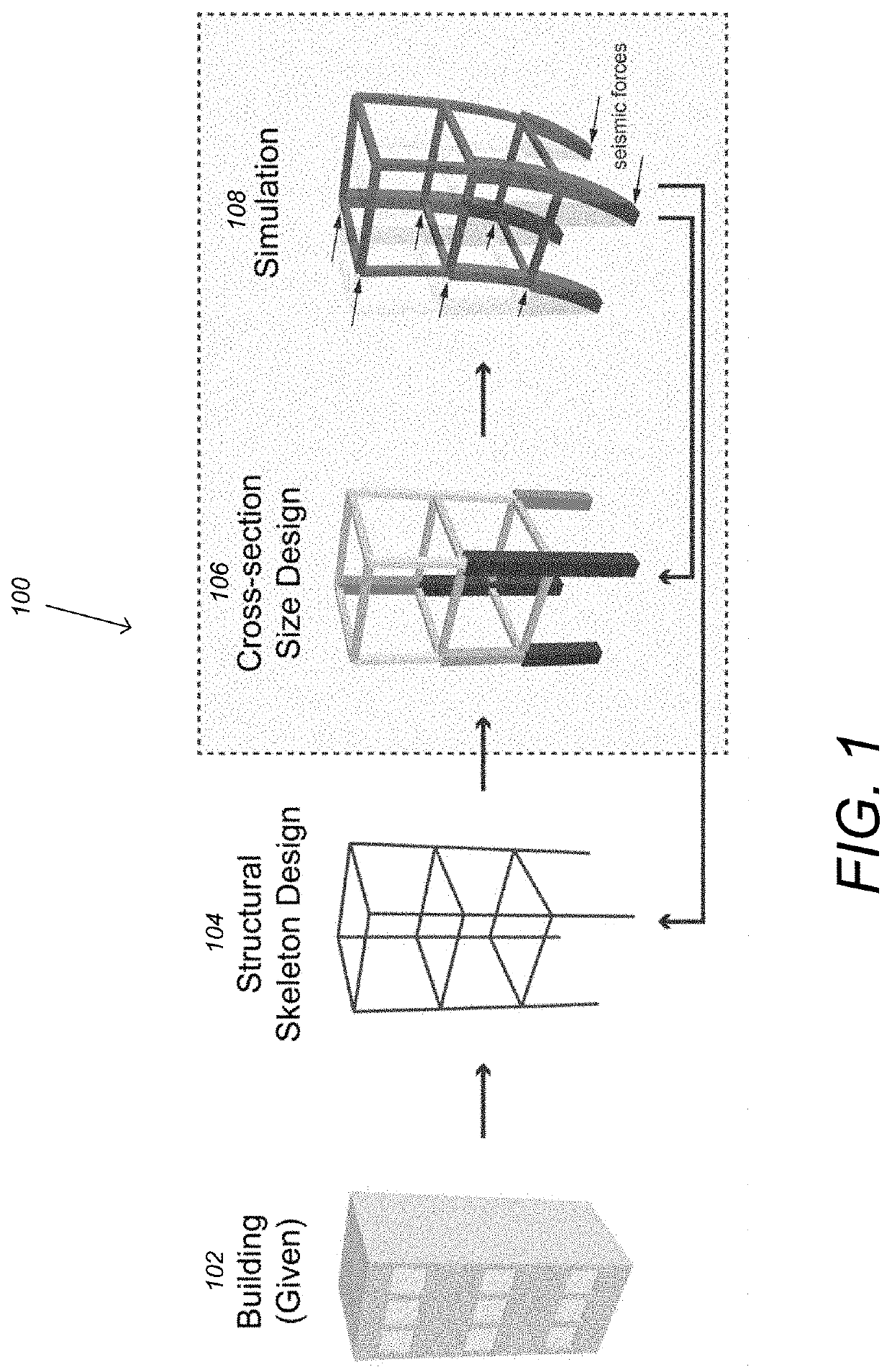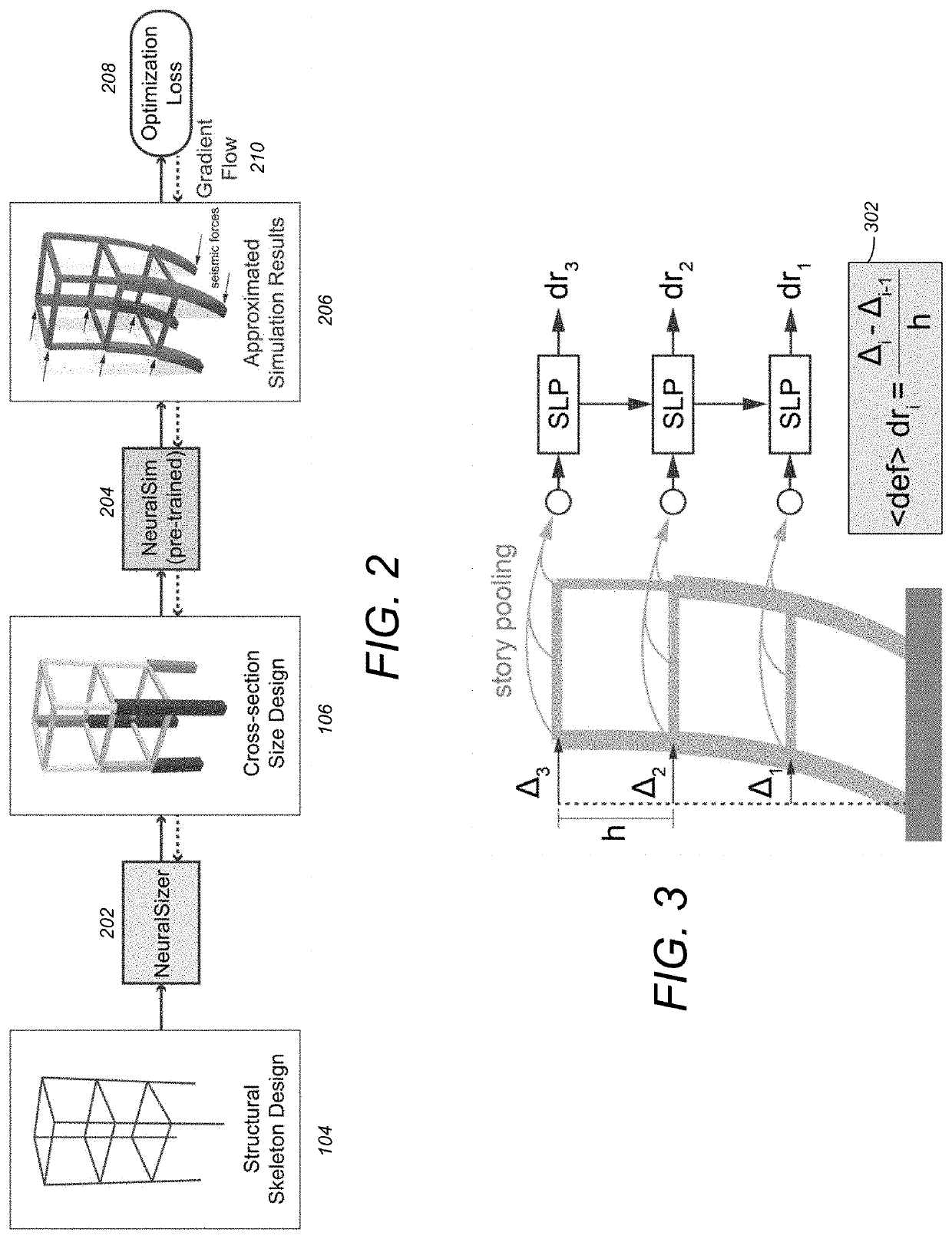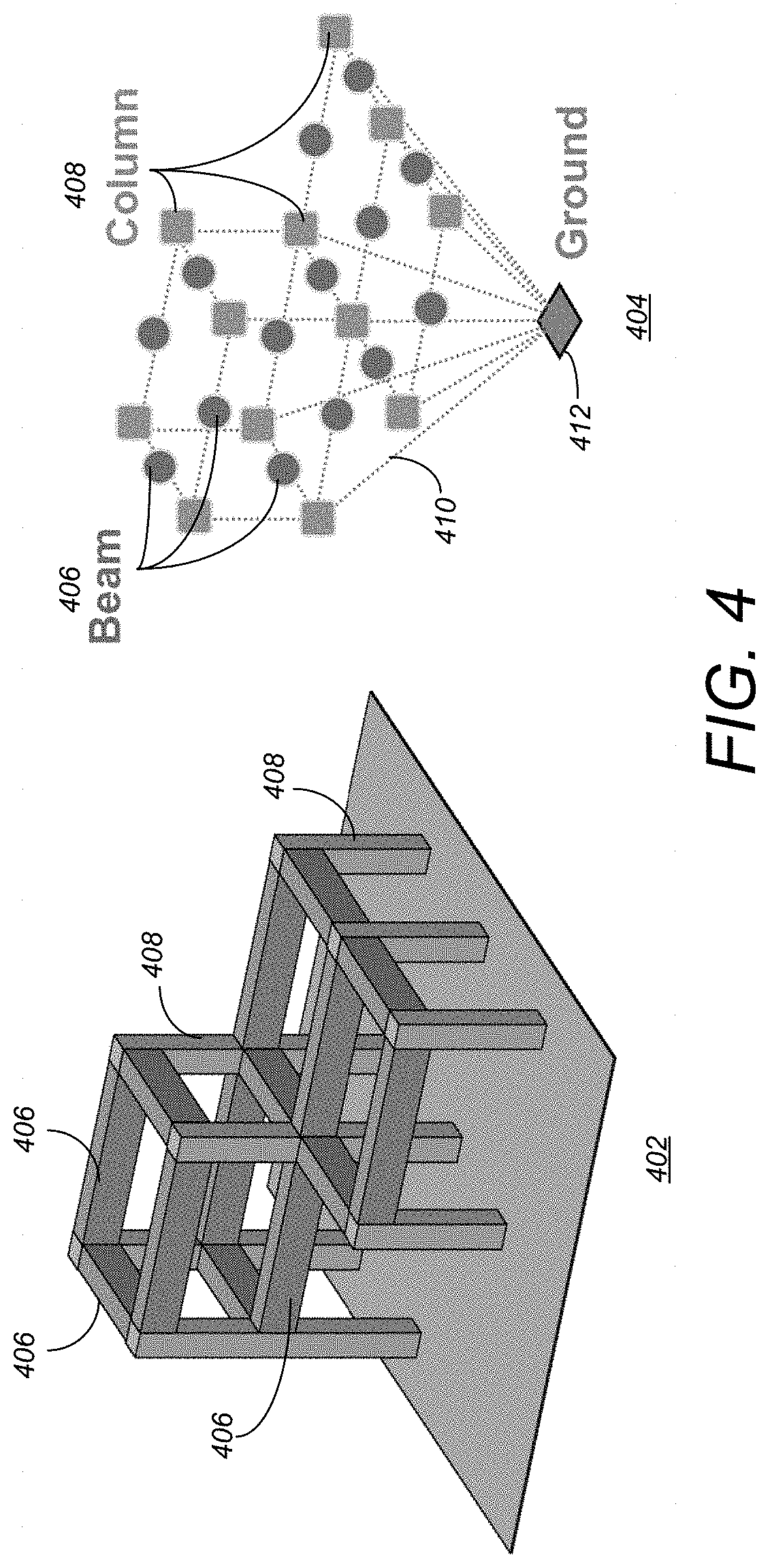Learning to simulate and design for structural engineering
a structural engineering and simulation technology, applied in the field of building design, can solve the problems of time-consuming and laborious structural engineering design process, compromise on suboptimal design for the majority of buildings, and structural engineers in practice often avoid optimization, so as to reduce building mass, reduce building mass, and reduce the size of design space
- Summary
- Abstract
- Description
- Claims
- Application Information
AI Technical Summary
Benefits of technology
Problems solved by technology
Method used
Image
Examples
Embodiment Construction
[0031]In the following description, reference is made to the accompanying drawings which form a part hereof, and which is shown, by way of illustration, several embodiments of the present invention. It is understood that other embodiments may be utilized and structural changes may be made without departing from the scope of the present invention.
Overview
[0032]Embodiments of the invention provide an end-to-end solution to automate the structural design process. FIG. 1 illustrates the iterative industrial structural design workflow in accordance with one or more embodiments of the invention. A typical structural design process 100 starts from a given building design 102, and then the structural engineer will propose a skeleton design 104, where the locations and connectivities of columns and beams are defined. After proposing the skeleton 104, the engineer will decide the cross-section size for each bar (column and beam) 106. The engineer will then evaluate the design by running struc...
PUM
 Login to View More
Login to View More Abstract
Description
Claims
Application Information
 Login to View More
Login to View More - R&D
- Intellectual Property
- Life Sciences
- Materials
- Tech Scout
- Unparalleled Data Quality
- Higher Quality Content
- 60% Fewer Hallucinations
Browse by: Latest US Patents, China's latest patents, Technical Efficacy Thesaurus, Application Domain, Technology Topic, Popular Technical Reports.
© 2025 PatSnap. All rights reserved.Legal|Privacy policy|Modern Slavery Act Transparency Statement|Sitemap|About US| Contact US: help@patsnap.com



